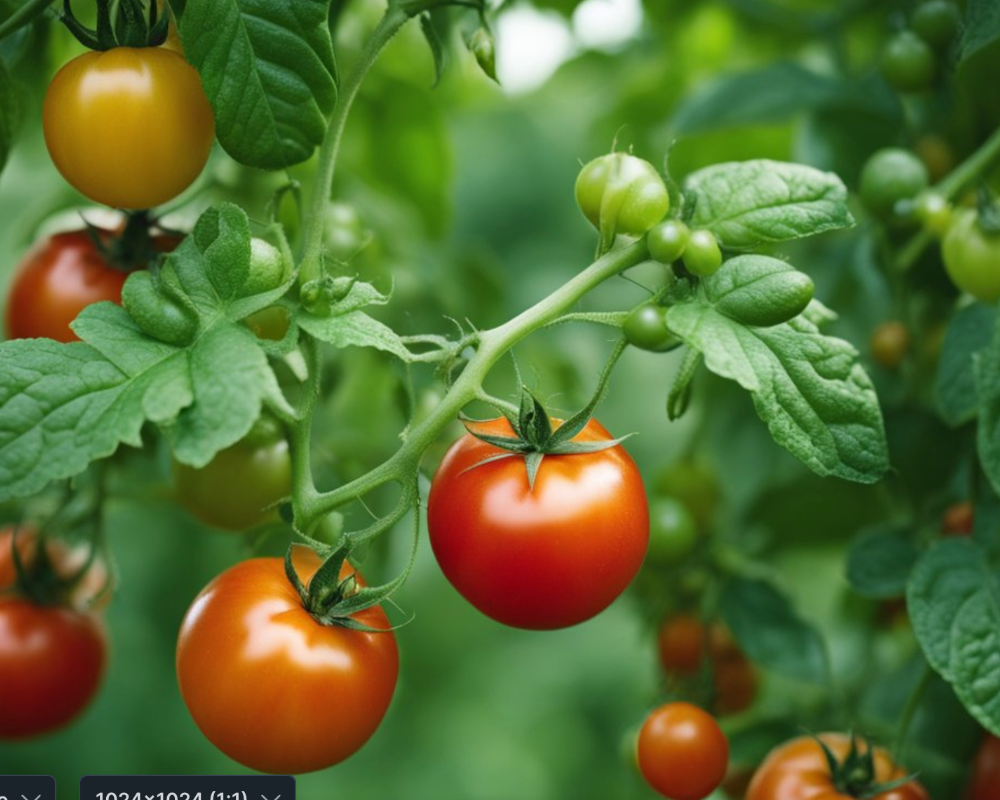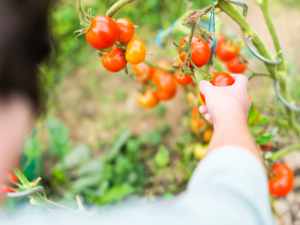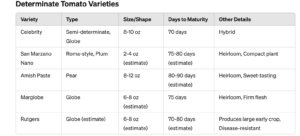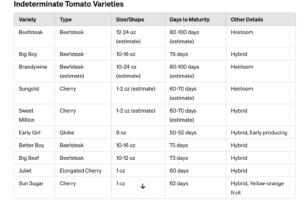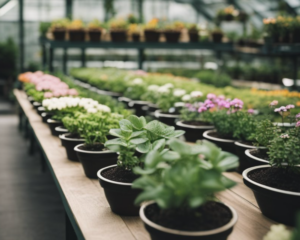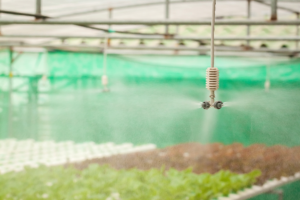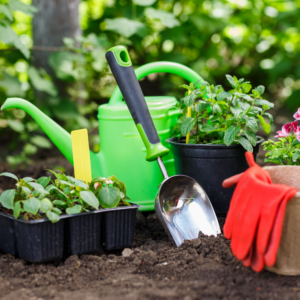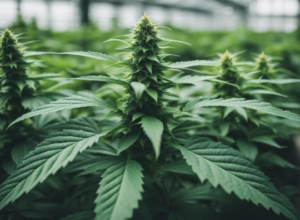Tomato plants come in a couple of key types, and knowing the difference really helps when planning your garden. Indeterminate tomatoes, like most cherry tomato varieties, just keep on growing and fruiting all season long. They’re perfect for a gardener like me who likes a steady flow of fresh tomatoes for salads and sandwiches. On the other hand, some tomatoes are determinate, which means they kind of sprint to the finish line. They grow to a set size, pop out a bunch of fruit pretty much at once, and then call it a day. These work great in smaller spaces or in a garden plot where I’m going for a big batch of tomato sauce and not much else.
It’s not just about space, though; the season’s length matters too. I’ve got the room and love to watch my garden grow over the warmer months, so the vining indeterminate tomatoes do well on a trellis in my raised garden bed—and there’s always something to pick. But I also stay on top of pruning them to keep the diseases and pests at bay. Determinate varieties are low-fuss, not needing stakes or much pruning, which is a huge plus when I’m planning a garden in a spot with a shorter growing season or where space is at a premium. Plus, no waiting around to get all my tomatoes at once makes them ideal for a big canning day.
Indeterminate Tomato Plants
Setting Up Support Systems
I’ve found that these vining tomato plants sure love to reach for the sky, sometimes extending upward to a staggering 12 feet. To keep them standing tall and proud, I get them some serious backup in the form of hefty support structures. While standard tomato cages might bow under the pressure, I opt for the larger varieties—they’re at least 4 feet high—and give them an extra boost with wooden or bamboo stakes. It’s like creating a custom scaffold with wooden or metal stakes paired with twine or twist ties, just to ensure these climbers have a solid foundation to thrive.
Pruning
I have a little ritual where I nip those eager suckers right in the bud to keep the plant’s vim and vigor under control. It’s key, though, to avoid the ones hanging out just beneath a flower cluster—wouldn’t want to miss out on any of the fruits of my labor. And I’ll thin out some of the dense foliage too, so the tomatoes can bask in the sunlight and ripen up nicely.
Picking the Produce
With these indeterminate tomato varieties, it’s a marathon, not a sprint. They take their time, getting their tan on well into tomato season because they’re busy growing sky-high. But, I’ve got an eye on the thermometer; when it hints at frosty times ahead, I gather all my tomatoes, ripe or not. Those shy green ones? They get a special spot on my sunny windowsill or tucked into a cozy brown paper bag to ripen in the warmth of my home.
Determinate Tomato Care
Setting Up Support Systems
While I appreciate the low maintenance of bush tomatoes, sometimes I lend a helping hand with staking when they’re weighed down with fruit. Keeps them upright and prevents any breakages.
Pruning
For the most part, I let my determinate tomatoes do their thing without bothering them. They naturally stop growing, so there’s no need for me to prune them.
Picking the Produce
I wait for that two-week window when my tomatoes decide to all blush at once. After this burst of ripeness, the plants start to wilt anyway, so I gather all the goodness while I can.
Choosing the Right Tomato Variety for Your Garden
When I’m deciding on which tomatoes to plant, I consider my end-use and the duration of my growing season.
Determinate tomatoes varieties are often my go-to for making sauces because they tend to have more flesh and fewer seeds. They’re a solid choice if I’m working with a brief growing season – think just a few months.
On the flip side, indeterminate tomatoes varieties keep me supplied with fresh tomatoes throughout the whole season. While they’re ideal for long, sunny seasons, I’ve found some varieties that adapt well to shorter periods too.
- Determinate:
- Pros: More flesh, fewer seeds, suited for short seasons.
- Cons: Limited harvest period.
- Indeterminate:
- Pros: Continuous harvest, great for fresh eating.
- Cons: Requires a longer season for best results.
Top Picks for Determinate and Indeterminate Tomato Types
Determinate Tomato Varieties
When I’m aiming for a compact garden or want a bulk harvest for sauces, I go for fixed growth “determinate” tomatoes. They only grow so tall and give me a cluster of fruit, usually all at once. Here are a few types of determinate tomatoes I recommend:
- Celeb Tomato: A sturdy variety that stays between 3 to 4 feet tall. I get a good yield from them, about 8 to 10 ounces per fruit, and they start ripening around 70 days.
- Compact San Marzano: It’s a smaller version of the classic, with tasty Roma-style tomatoes that are perfect for cooking.
- Heirloom Pearl: This paste tomato is sweet and great for cooking. They weigh in between 8 to 12 ounces.
- Sturdy Heirloom: These resist bruising and cracking and turn ripe at about 75 days.
- Jersey Tomato: While technically determinate, it gives me an early bountiful harvest, then keeps producing through the season.
Indeterminate Tomato Varieties to Consider
I love indeterminate tomatoes varieties for their season-long production, excellent for fresh eating. Here’s a list that deserves some space in the garden:
- Classic Beef: A favorite among the beefsteaks, ready in about 75 days, and each fruit can weigh between 10 to 16 ounces.
- Hefty Beef: Similar to the classic but ripens a smidgeon earlier at about 73 days.
- Big Boy: This one’s a charmer, with fruits also weighing up to 16 ounces and ready around 78 days.
- Quick Maturing Globe: It gives me fruit in about 50 days, weighing around 8 ounces each.
- Mini Red: This elongated cherry type ripens quickly, with bite-sized fruits ready in 60 days.
Sunny Cherry: I get these sweet cherry tomatoes in about 62 days; they are a vibrant yellow-orange and weigh about 1 ounce each.
In case you’d rather view data in a table, I’ve laid it out for you here:
By the way, I’ve learned that the fixed types are best for sauces, while the indeterminate varieties keep my table filled with fresh tomatoes for slicing and snacking. I also make it a point to prune my vining tomatoes for better energy use and sun exposure. Yes, they can reach up to 10 feet tall, but I use support structures to manage them, though it means sacrificing some of the fruits if I choose to trim the tops.
My Final Thoughts
Choosing the right type of tomato plant for your garden boils down to understanding your space, needs, and climate. Indeterminate tomatoes are great for gardeners who enjoy a continual harvest throughout the growing season, making them perfect for fresh salads and ongoing culinary use. They require a bit more maintenance, including regular pruning and support, but the payoff is fresh tomatoes for a longer period.
On the other hand, determinate tomatoes are ideal for those with limited space or who prefer a concentrated harvest. These plants are less demanding in terms of support and pruning, making them a great choice for beginners or those interested in large-scale canning and sauce-making. They grow to a set size and produce all their fruit at once, which can be very convenient for big cooking projects.
Ultimately, your choice will depend on what you value more: the extended pleasure of picking fresh tomatoes over several months or the simplicity and order of a one-time, abundant harvest. Each type of tomato plant has its virtues and can be suited to different gardening styles and end-uses.
Common Questions
1. What Are Growth Patterns of Determinate vs Indeterminate Tomatoes?
Tomatoes come in two main growth patterns: bush (determinate) and vine (indeterminate).
Bush tomatoes, or determinate tomatoes varieties, grow to a fixed height and tend to produce their fruit all at once. They stop growing when fruit sets on the terminal or top bud. They’re more compact and generally need less support. On the other hand, vine tomatoes, or indeterminate varieties, continue to grow and produce fruit throughout the growing season until the first frost. They require more space and support due to their continual growth.
2. What Are Some Types of Determinate Tomatoes?
- Roma
- Marglobe
- Rutgers
- Celebrity
- Bush Early Girl
These are among the top bush tomato varieties favored for garden planting.
3. What are some Reasons to Choose Determinate Tomatoes?
- Space-saving: Their compact size makes them ideal for containers or small spaces.
- Concentrated harvest: The short harvest period is perfect for canning or processing.
- Less maintenance: They usually require less staking and support.
These characteristics make bush tomatoes a popular choice for those with limited space or who enjoy preserving their harvest.
4. Determinate or Indeterminate: What Are Beefsteak Tomatoes?
Beefsteak tomatoes can be both determinate and indeterminate depending on the variety. It’s essential to check the seed package or plant tag for this information.
5. How Do I Identify Heirloom Tomato Growth Types?
To determine if an heirloom tomato is bush or vine:
- Research the specific variety as there is no universal rule for heirlooms; they can be either growth type.
- Observe the plant’s growth habit; bush types will cease vertical growth sooner than vine types.

